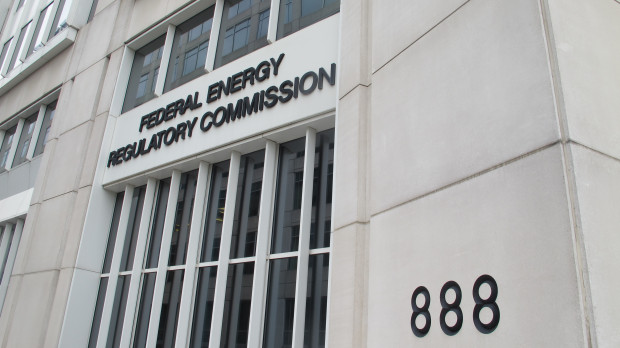Federal court ruling could delay major natural gas pipeline projects

Marie Cusick / StateImpact Pennsylvania
In a 2-1 ruling, the U.S. Court of Appeals for the District of Columbia Circuit found the Federal Energy Regulatory Commission should have done a better job estimating greenhouse gas emissions linked to a pipeline expansion project, or explained why it couldn't do so.
A recent federal court ruling could delay major pipeline projects planned to move Marcellus Shale natural gas to new markets.
On Tuesday the U.S. Court of Appeals for the District of Columbia Circuit ruled 2-1 in favor of a climate-related challenge brought by the Sierra Club against federal regulators. The case centers on the Southeast Market Pipelines Project, the cornerstone of which is the 500 mile Sabal Trail Pipeline running through Alabama, Georgia, and Florida.
Sierra Club v. FERC
The decision forces the Federal Energy Regulatory Commission (FERC) to do a better job quantifying greenhouse gas emissions, which Sierra Club attorney Elly Benson says are a clear environmental impact of pipelines as they deliver natural gas to fuel power plants.
“FERC has been trying to ignore the full impacts of these decisions, while rubber stamping many of these massive pipelines,” says Benson. “It was very gratifying for the D.C. Circuit to say, ‘No FERC, you actually need to look at the full consequences of this.'”
In the past 30 years, the commission has denied only two pipeline proposals.
In the opinion, Judge Thomas Griffith, a George W. Bush appointee, says FERC should have either given a better estimate of the pipelines’ downstream emissions, or supplied a better explanation for why that wasn’t possible.
“It’s not just the journey, though, it’s also the destination,” Griffith writes. “All the natural gas that will travel through these pipelines will be going somewhere: specifically, to power plants in Florida, some of which already exist, others of which are in the planning stages. Those power plants will burn the gas, generating both electricity and carbon dioxide.”
A FERC spokeswoman declined to comment.
According to Greenwire, during oral arguments in April, FERC attorney Ross Fulton said the agency concluded the project, “would not significantly contribute to cumulative greenhouse gas impacts because power plants receiving natural gas from the pipelines were switching from coal, which emits more carbon dioxide.”
In a dissent, Judge Janice Rogers Brown, another Bush appointee, writes FERC has, “no control over whether the power plants that will emit these greenhouse gases will come into existence or remain in operation.”
“Boilerplate language”
Mark Robinson, a gas industry consultant who previously led FERC’s Office of Energy Projects, which oversees pipelines, says the ruling could create procedural delays for other pending pipelines, but he views it as a “bump” in the road.
“It’s unfortunate, but it doesn’t mean anything,” Robinson says. “I do not expect it will in any way shape the commission’s ultimate decisions.”
FERC could appeal the ruling, he says, but more likely, it will supplement its environmental reviews, adding more information about the role natural gas plays in warming the climate.
“FERC will come up with some boilerplate language on CO2 emissions, and they’ll stick that in.”
Former FERC attorney Fred Jauss, who now works with oil and gas industry clients for the firm Dorsey & Whitney, agrees the ruling will likely add delays to some projects.
“For other pipelines pending at FERC, if their applications have not included any kind of quantification of the downstream greenhouse gas impacts, it’s very likely FERC will go back and ask them to do that,” says Jauss. “The net result is going to add some additional time onto the existing permitting process. How much time that is, it’s really unclear.”
















